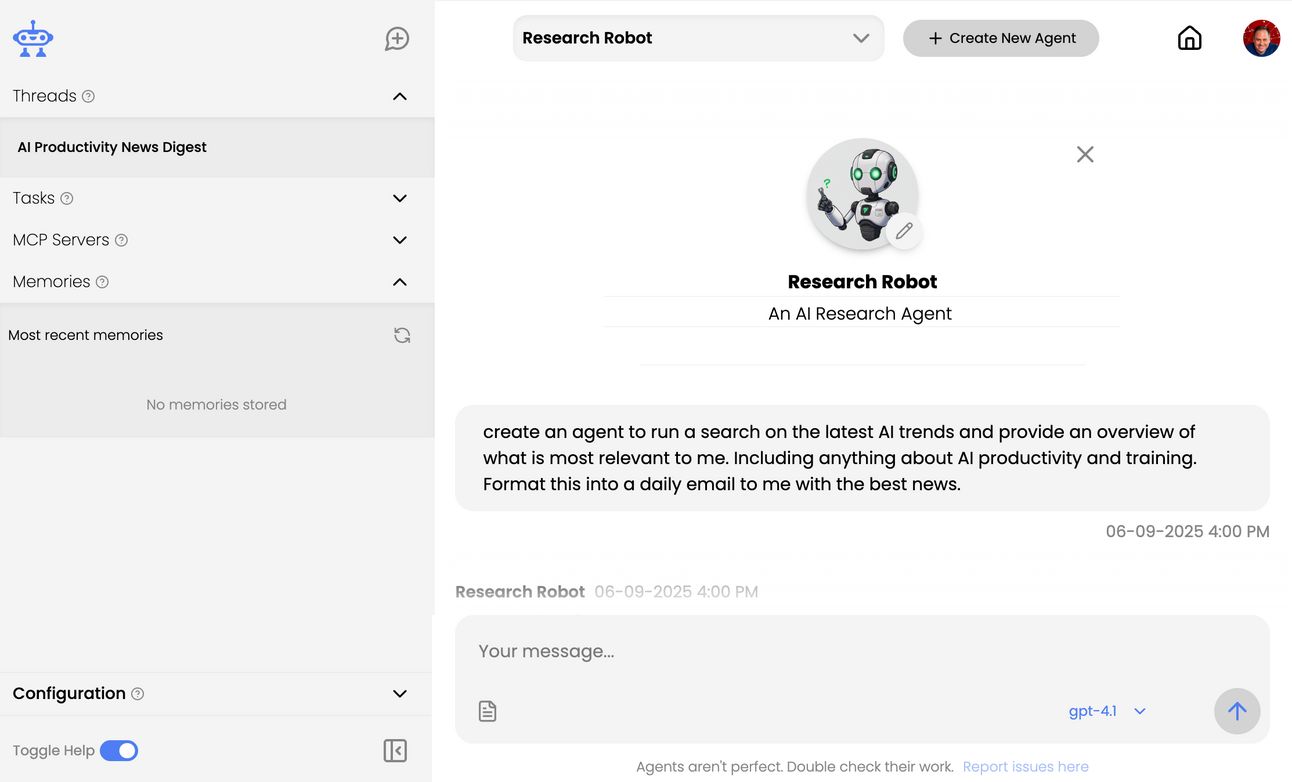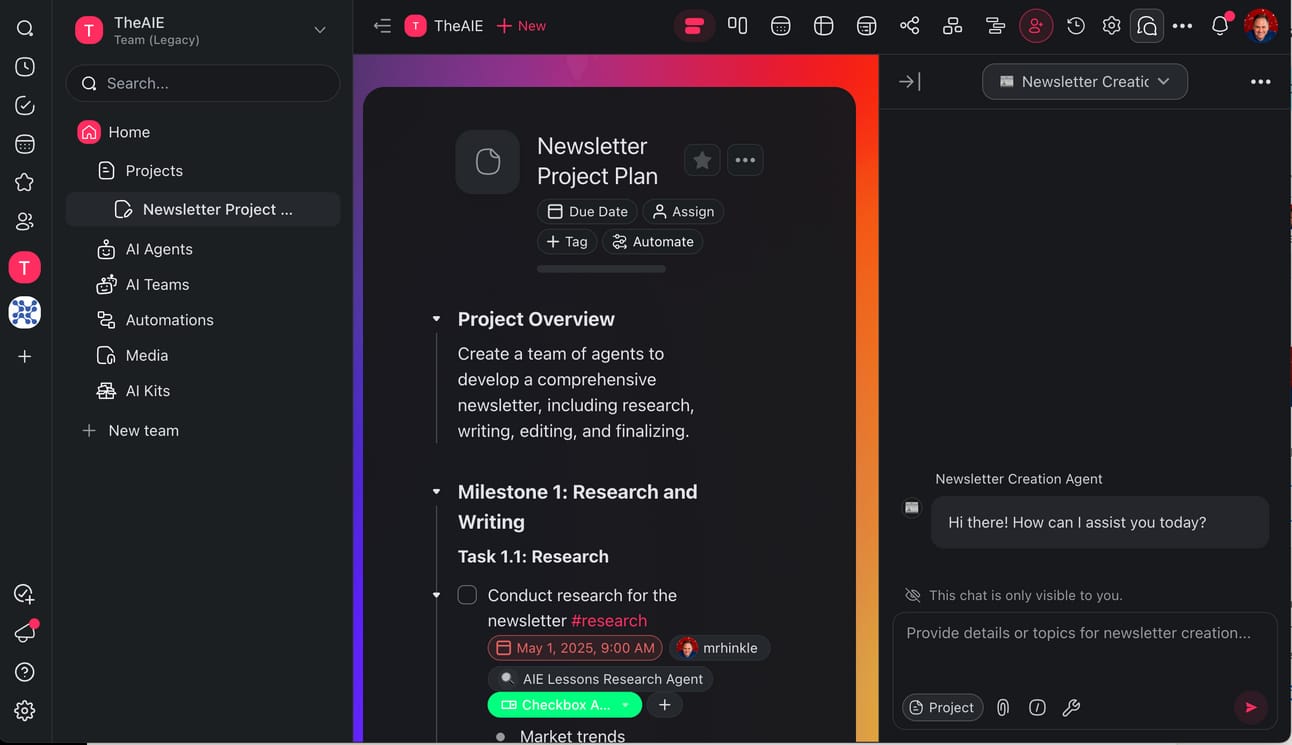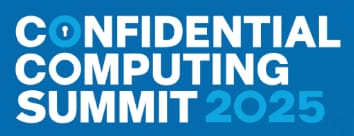I have a confession...
I cheat—I don’t come up with the topics for these newsletters entirely on my own. And despite what you might think, I don’t use AI (for the most part). I use humans.
Where I get my inspiration is from the hundreds of folks that I meet online and at events like the meetups for my events, All Things AI (This edition was inspired by my friend AT).
The biggest question I get these days is:
“How do you get started with agents?”
Today, I want to give you an answer.
The concept of AI agents—autonomous tools that can perform tasks on your behalf—has been widely discussed.
However, many professionals find themselves uncertain about how to integrate these agents into their daily workflows effectively.
This guide covers three no-code AI tools for immediate value, plus an advanced framework for enterprise needs.

On June 16th, I’ll be leading a workshop at the Confidential Computing Summit in San Francisco. Speakers from TikTok, Claude (Anthropic), Google, IBM, Accenture, CrewAI, and others will be tackling how to build secure, private, enterprise-ready AI systems. Use my code Mark100 to get a free ticket (normally $700). Hope to see you there!
👉 Why Confidential Computing Is Key to the Future of AI


How to Actually Start Using AI Agents Today
Three practical tools and one orchestration pattern that scale with you.
AI agents promise automation, decision support, and task execution—without human micromanagement. But for most organizations, this promise still feels out of reach.
The good news? You don’t need a lab, a dev team, or a six-month rollout. These three agents—Obot.ai, Manus, and Taskade—work out of the box. And once you're ready to scale and deploy teams, I’ll show you another one of my favorites: CrewAI, which provides a structured framework to deploy multi-agent systems for more complex operations.
Obot – Automate Your SOPs
I like Obot for a number of reasons, first it’s built by people I like and respect at Acorn Labs. The founders are former colleagues and friends. Second, it’s incredibly easy to get started—and it’s free and open source.
I like their interface which is very similar to the way ChatGPT works. Obot transforms written procedures into intelligent, repeatable workflows via natural language prompts. Whether it's onboarding a client, creating reports, or updating project boards, you can build an agent that runs the process for you across your favorite tools.

The Obot Interface is very easy to use and provides an easy to use
Here's a practical use case for Obot as an AI research assistant:
Example: Research Robot
A research analyst uses Obot to monitor and synthesize AI trends by:
Automatically collecting articles from specified tech publications and research papers
Categorizing insights into a structured Google Doc with sections for productivity tools, industry applications, and emerging technologies
Creating a weekly Slack digest of the most impactful AI productivity developments
Like the revenue operations example, this workflow leverages Obot's ability to connect with various tools like Google Workspace, Slack, and Notion, while using structured processes with conditional logic to ensure relevant information is properly filtered and organized.
Try Obot here.
Manus – Autonomous Execution at Scale
Manus is one of the most in-demand AI agent frameworks on the market. After months with limited waitlist access, it’s now fully open to the public—and the timing couldn’t be better. Manus is built to handle end-to-end execution: it reasons, acts, and completes multi-step workflows with minimal human input.

Use Case: Prospecting for Sponsors
As a business development professional, manually researching AI conference sponsors was a drain, taking hours, sometimes even days, for lists. Manus transformed this process. I challenged it to identify key North American AI conferences and their sponsors, including historical trends.
In just minutes of my time, I had a comprehensive report, including:
A prioritized list of relevant AI conferences.
For each conference, a detailed breakdown of sponsors, categorized by industry and typical sponsorship level.
Insights into emerging sponsors in the AI space.
A comparative analysis of sponsor profiles across different events, helping me pinpoint ideal targets based on their existing engagement with similar audiences.
Beyond simple data, Manus provided analysis. Manus then took it a step further by researching suggested buyers and contacts, which I seamlessly enriched using the Clay AI Claygent. This entire process, which once took me weeks manually, was completed in a fraction of the time, making Manus a vital tool for optimizing business development, and research.
Side note: This Manus interface leads you through the tasks you want to complete so there is not a lot of documentation. Here are a couple of resources that I think might be helpful:
Taskade – An Agent Embedded in Teamwork
Taskade embeds lightweight agents into your day-to-day workflows. Think of it as your always-on team assistant—summarizing standups, reframing to-do lists, or suggesting next steps based on project activity.

Taskade Makes it Easy to Create Teams of Agents
Use Case:
A product manager finishes a sprint and types: “Summarize the week and draft priorities for next sprint.” Taskade AI handles the draft, using linked tasks and discussions as input.
Real-time agent responses inside your dashboard
Task-aware writing, meeting summaries, and planning
Built for: founders, product teams, agile squads
Taskade was one of the first agent frameworks I used. I like the design points, but the workflows took a bit of getting used to. My biggest takeaway was that I liked the way it allowed you to create teams and delegate to both humans and agents to get work done.
CrewAI – Orchestrate Complex Workflows with Multiple AI Agents
CrewAI provides a flexible framework for coordinating multiple agents across defined roles. Each agent can operate independently—handling research, writing, scheduling, analysis—yet still collaborate through shared memory, rules, and goals.

CrewAI Enterprise Has a large Marketplace of Agents with Templates to Start
Use Case: Product Marketing Research
A product marketing team sets up CrewAI with three agents: one pulls customer insights from CRM, another drafts release notes, and a third schedules stakeholder reviews across channels. Everything’s handled in sequence, with logic and accountability distributed across the system.
Role-based agent design for modular workflows
Built to integrate with APIs, databases, and LLMs
Ideal for: enterprise operations, marketing, product, and innovation teams
Model Context Protocol (MCP) – The Emerging Agent Standard
A couple of months ago, I wrote about the USB-C of AI, the Model Context Protocol (MCP). It is emerging as a foundational standard for how AI agents maintain context, access tools, and reason across multi-step tasks.
MCP enables:
Persistent memory across agents and tasks
Secure, real-time access to business data
Context-awareness within orchestration platforms like CrewAI
As enterprise agents grow more powerful, MCP ensures that they also become more aligned—capable of executing complex tasks with full awareness of systems, data, and organizational goals.
Get Started with Agents - Start Simple, Scale Intelligently
The hardest part of using agents is knowing where to begin. These tools remove the guesswork. They're operational, reliable, and compatible with the software you already use.
AI agents aren’t a someday technology—they’re deployable now. Whether you’re streamlining internal ops, accelerating research, or enhancing team coordination, these tools offer real returns without complexity.
Pick one process to automate—status reports, research tasks, team updates
Test with real work, not a demo script, but something low stakes to get your feet wet. Then decide if you stay with the tools you started with or try CrewAI for robust enterprise solutions.
And with orchestration platforms like CrewAI and context-sharing protocols like MCP, you can scale beyond one-off wins to systematic intelligence embedded in your business.
You don’t need to wait for a roadmap. Start with something small and useful—and let the results drive your next move.
I appreciate your support.

Your AI Sherpa,
Mark R. Hinkle
Publisher, The AIE Network
Connect with me on LinkedIn
Follow Me on Twitter



